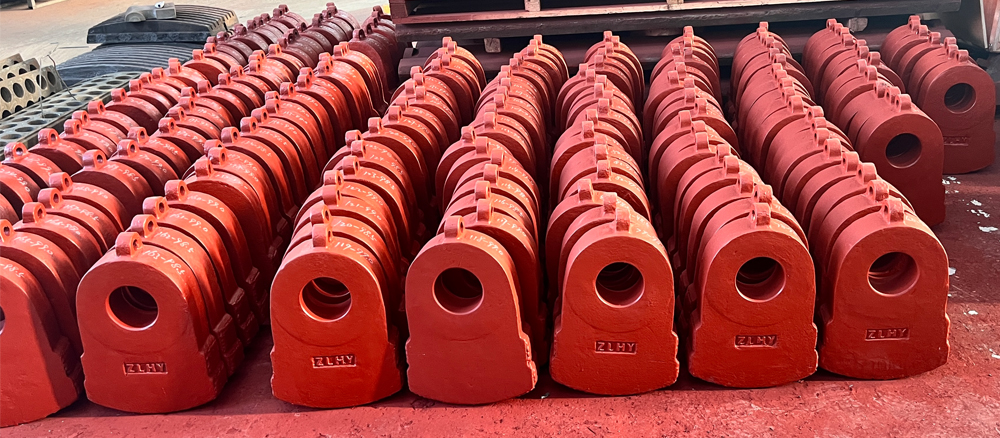Reducing the wear of the crusher hammer head requires comprehensive measures from material selection, operation optimization, maintenance and other aspects. The following are specific methods:
1. Optimize the hammer head material and process
Select high wear-resistant materials
Use high manganese steel, high chromium cast iron, alloy steel and other wear-resistant materials to manufacture the hammer head, or use composite casting technology (such as inlaying hard alloy in the working part of the hammer head).
Our company produces high manganese steel insert hard alloy +hardfacing hammer heads

Surface strengthening treatment
Improve the surface hardness of the hammer head by surfacing wear-resistant layers (such as tungsten carbide), surface quenching, carburizing or spraying ceramic coatings.
Reasonable design of hammer head structure
Optimize the shape of the hammer head (such as streamlined design) to reduce stress concentration; adopt a symmetrical structure, which can be replaced after wear to extend the life.
2. Control the characteristics of the crushed material
Limit the hardness of the material
Avoid crushing ultra-hard materials (such as high silica, metal impurities) that exceed the design range of the equipment, and pre-screen or pre-treat if necessary.
Control the moisture content of the material
Material with too high humidity is easy to adhere, increasing the friction load of the hammer head, which can be dried or adjusted by adjusting the feed humidity.
Uniform feed size
Oversized or unevenly distributed feed size will lead to unbalanced hammer impact force. Install pre-screening equipment (such as vibrating screen) to ensure uniform material.
3. Optimize equipment operating parameters
Adjust rotor speed
Too high speed will increase the impact frequency between hammer and material, while too low speed will increase extrusion friction. It needs to be adjusted to the optimal speed according to material characteristics.
Reasonable power allocation
Avoid long-term overload operation and ensure that the motor power matches the crushing requirements.
Balance rotor structure
Regularly check the balance of the rotor to prevent eccentric wear of the hammer due to vibration.
4. Improve equipment structure and maintenance
Install protective device
Install an iron remover at the feed inlet to prevent metal foreign matter from entering and damaging the hammer.
Set up a buffer device (such as a rubber pad) to reduce impact vibration.
Regular maintenance and inspection
Replace or replace worn hammers in time to keep the weight of the hammers balanced (the difference in wear of a single hammer does not exceed 5%).
Check the fastening bolts to prevent loosening and displacement of the hammer.
Lubrication system maintenance
Ensure that the bearings and other transmission parts are well lubricated to reduce friction heat and vibration transmitted to the hammer.
5. Intelligent monitoring and management
Install sensor monitoring
Real-time monitoring of equipment status through vibration and temperature sensors, timely shutdown and maintenance when abnormalities are found.
Record wear cycle
Statistic the life of the hammer under different working conditions, optimize the replacement plan, and avoid excessive wear and damage.
6. Other practical suggestions
Multi-stage crushing process: For high-hardness materials, a combined process of jaw crusher + impact crusher/cone crusher is used to reduce the load on the hammer crusher.
Operation training: Standardize employee operations, prohibit forced crushing of oversized materials or frequent start and stop of equipment.
The above measures can significantly extend the life of the crusher hammer, reduce maintenance costs, and improve crushing efficiency. In actual applications, the plan needs to be flexibly adjusted in combination with specific working conditions (such as material type and equipment model).